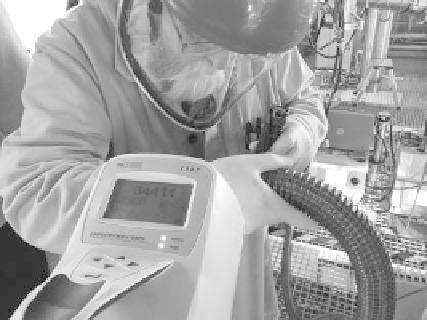Biomedical Engineering Reference
In-Depth Information
is of known high toxicity, then a more material or morphology specific detection
technique is required than that used in tier 2. In this particular case, it has to be
decided whether a tier 3 measurement is sufficiently specific or a completely differ-
ent approach has to be applied.
11.2.2 t
ier
2
As long as no health based limit values exist for engineered nanomaterials, mea-
sured concentrations need to be compared with the background concentration lev-
els to determine a realistic value for the exposure to engineered nanomaterials.
Measurements according to tier 2 foresee a simplified assessment of the workplace
exposure by means of either a short-term screening (tier 2a.1) or long-term (tier 2a.2)
or even permanent (tier 2b) monitoring. Measurements in tier 2 are conducted using
particle size integrating, easy-to-use devices, measuring, for example, the total par-
ticle number concentration as shown in Figure 11.2. Typical instruments are hand-
held, battery-operated CPCs and diffusion charger based devices (for more details on
instrumentation see Chapter 2). The most important outcome of tier 2 measurements
is a decision whether an expanded measurement according to tier 3 is necessary or
whether emission of nanoscale particles released from ENMs into workplace air dur-
ing production, handling, or processing can be reasonably excluded. However, tier 2
may already give clear indication that additional (technical) measures are required to
avoid exposure of workers. In that case, those measures may be realized first before
tier 2 measurements are repeated for their verification.
If no permanent particle monitoring system is installed in the workplace under
consideration, tier 2 measurements are conducted as a screening of the particle
concentration. The main questions to be answered during screening measure-
ments are
FIGURE 11.2
Typical screening measurement using a handheld CPC during cleaning
operations.

Search WWH ::

Custom Search